
www.hannainst.com
HI 3895HI 3895
HI 3895HI 3895
HI 3895
Quick Soiltest Quick Soiltest
Quick Soiltest Quick Soiltest
Quick Soiltest
ISTR3895R2 05/04
HANNA Quick Soiltest for happy plants:
Hanna Quick Soiltest provides you with an economical way to rapidly
test the pH as well as the three basic elements needed for a healthier
plant: nitrogen (N), phosphorus (P) and potassium (K).
pH. Soil can be acid, neutral, or alkaline. Each plant has a range of pH
in which it thrives and most plants prefer conditions near the neutral
mark (pH 5.5-7.5). There are however plants that prefer acid or alka-
line environments. The solubility of the nutrients, that is the ability of
the plants to absorb them, depends largely on their pH value. The soil
microbiological activity is also pH dependent. Most bacteria, specially
those putting nutrients at the plants’ disposition, prefer moderately acid
or slightly alkaline conditions. The pH level hence influences the fertil-
ity of the soil.
Nitrogen (N). Nitrogen is an indispensable element for the growth of
vegetation and is a key factor in fertilization. A correct quantity of
Nitrogen allows a healthy growth of the entire structure and in particular
creates a thriving and greener plant. An excess of Nitrogen on the other
hand, weakens the plant’s resistance creating an unbalanced relation-
ship between the green parts and the stems and trunk.
Phosphorus (P). Phosphorus contributes to the formation of buds,
roots and blooming as well as lignification. A lack of phosphorus
results in a stifling of plant.
Potassium (K). Potassium plays an important role in how much
water is absorbed by the roots and the regulation of cellular activity. In
addition, Potassium makes plants more resistant to disease and yields
a positive effect on the color and fragrance in flowers.
FRUIT & VEGETABLE - Testing the nitrogen and
phosphorus level in your soil is important, especially
before seeding and replanting. While root vegetables
need phosphorus, leafy plants require more Nitrogen.
Potassium, on the other hand, helps increase the quality of the crop.
With the HANNA Quick Soiltest, you keep these three important ele-
ments under control.
FLOWERS & SHRUBS - The right quantity of potas-
sium is the key factor in ensuring beautiful and fragrant
flowers. The other elements play an important role too
in achieving rapid and harmonious growth.
CHEMICAL REACTIONCHEMICAL REACTION
CHEMICAL REACTIONCHEMICAL REACTION
CHEMICAL REACTION
LAWNS - A lush lawn is the result of care and
attention. In addition to tilling and irrigation, the
pH and nitrogen levels need regular checks. So,
what better than the HANNA Quick Soiltest in the
quest for thicker and greener lawns.
FRUIT & DECORATIVE TREES - Trees are the
most appealing feature of our gardens. Nitrogen
and phosphorus help in speeding up the growth of
young plants, encouraging abundance of foliage
and strengthening the trunk and the roots. Potas-
sium, on the other hand keeps, the plants in tip top condition by
protecting them from diseases.
BONSAI & HOUSEPLANTS - Every time a
houseplant, but in particular a bonsai is potted, the
choice of soil mixture is of prime importance. Having
prepared the mixture, the HANNA Quick Soiltest
will in a matter of minutes test the level of pH and other elements
ensuring a livelier plant.
WHEN TO TEST YOUR SOIL
Your soil should be tested prior to seeding, planting and fertilizing as
well as when other soil, manure or compost has been added and not
only when the plants do not seem to be in a tip top condition (yellow
leaves or stunted growth)
SAMPLING
1) Extracting Soil Sample
•With a large field, take 1 or 2 samples per 1000 m2 (0.25
acre) of homogeneous areas.
•Even for smaller areas, 2 samples are recommended (the
more the samples, the better the end-results)
•If you have a small garden or plot, 1 sample is sufficient
2) Avoid extracting samples from soil presenting obvious anomalies
3) Sample quantity: take the same quantity of soil for each sample.
For example, use bags with similar dimensions (1 bag per sample)
4) Depth of extraction:
•General: dig and discard the 5 cm (2") of topsoil
•For lawns: take the sample at a depth of 5 to 15 cm (from 2"
to 6").
•For other plants (flowers, vegetables, shrubs): from 20 to 40
cm of depth (8" to 16")
•For trees: Samples from 20 to 60 cm of depth (8" to 24'’).
5) Mix all the samples together to obtain a homogeneous mixture of
soil.
TEST PROCEDURE
Reading the Color-Card
The pH, phosphorus (P2O5), and nitrogen (NO3) tests use colorimetric
methods of testing. The color developed corresponds to the soil fertility.
To figure out the fertility, the color which appears must then be com-
pared against the Color-card.
To match the color, hold the tube containing the test solution approxi-
mately 2 cm away from the color-card. Stand with a light source behind
the card and match the test tube color to that of the Color-card to read:
Trace, Low, Medium or High. If the color of the test tube falls between
two standard colors, e.g. between Medium and High, the test result is
then Medium-High. Eight different readings are possible, Trace, Trace-
Low, Low, Low-Medium, Medium, Medium-High, High, and very-High.
The potassium (K2O) test utilizes a turbidimetric method. To obtain the
test results, rest the tube against the Color-card over the reading area.
Stand with the light source behind your back. Start at Trace, look through
the tube, and go to Low, Medium or High until you see the white line in
the middle of the reading area of the Color-card. The test result is
obtained in Trace, Low, Medium or High.
Performing the test
pH test. Add half a teaspoon of soil to the test tube and fill it to the
lower graduation mark with water (2.5 ml): use the graduated card for
the measure. For best results, use bottled or distilled water. Add the
content of one packet of HI 3895-pH reagent, replace the cap and
shake gently for 30 seconds. Allow the tube to stand for 5 minutes.
Match the color with the pH color-card and read the pH value.
Nitrogen (N) - Phosphorus (P) - Potassium (K):
General Extraction Procedure [for the P, N, and K tests]
Add the following to a clean can or a coffee jar:
Field soil: 1.5 cup of soil and 8 cups of water
Garden soil: 1 cup of soil and 8 cups of water
Greenhouse soil: 1 cup of soil and 16 cups of water
For best results, use bottled or distilled water. Stir or shake gently for at
least one minute and make sure that all the soil is moistened. Allow to
stand until the soil settles (from 30 minutes to 24 hours depending on
the soil texture). The clearer the extract becomes, the better the results,
however, a little cloudiness will not affect the accuracy of the test.
Nitrogen (NO3) test. Use the pipette to transfer 2.5 ml of the clear
general soil extract (above) to a clean test tube [*]. Add the content of
one packet of HI 3895-N reagent to the tube, replace the cap and
shake well for 30 seconds to dissolve the reagent. Allow the tube to
stand for 30 seconds, match the pink color with the Nitrate color-card.
Phosphorus (P2O5) test. Use the pipette to transfer 2.5 ml of the
clear general soil extract (see above) to a clean test tube [*]. Add the
contents of one packet of HI 3895-P reagent to the tube, replace the
cap and shake well for 30 seconds to dissolve the reagent. Match the
blue color against the Phosphorus color-card for the P concentration.
Potassium (K2O) test. Use the pipette to add 0.5 ml of the clear
general soil extract (above) to a clean test tube [*]. Fill the tube to the
lower graduation mark (2.5 ml) with water. Add the content of one
packet of HI 3895-K Reagent to the tube, replace the cap and shake
well for 30 seconds to dissolve the reagent. Match the test tube against
the Potassium reading-card.
[*]: Don’t transfer any soil. To avoid agitation of the soil, squeeze
the bulb of the pipette before inserting the pipette into the soil
extract solution.
HEALTH & SAFETY
The chemicals contained in this test kit may be hazardous if improperly
handled. Read carefully Health & Safety Data Sheets before performing
the tests.
Health and safety data sheets are available on line: www.hannainst.com
CONTENTS
Each kit is supplied with:
•40 powder packets (10 each for pH, N, P and K);
•1 plastic pipette (1 ml);
•4 test tubes;
•4 Color Cards;
•1 Graduated Card.

HANNA Quick Soiltest para conseguir
plantas lozanas:
El test de suelos rápido, de HANNA, proporciona al usuario una manera
económica de comprobar rápidamente el pH así como los tres
elementos básicos necesarios para una planta más sana: nitrógeno
(N), fósforo (P) y potasio (K)
pH. El suelo puede ser ácido, neutro o alcalino. Cada planta tiene un
rango de pH en el que crece muy bien y la mayor parte de las plantas
prefieren condiciones próximas a la marca neutra (pH 5,5-7,5). No
obstante, existen plantas que prefieren entornos ácidos o alcalinos. La
solubilidad de los nutrientes, esto es, la capacidad de las plantas de
absorberlos, depende sobremanera de su pH. La actividad microbiológica
del suelo también depende del pH. La mayoría de las bacterias,
especialmente las que ponen nutrientes a disposición de las plantas,
prefieren condiciones moderadamente ácidas o ligeramente alcalinas.
Por lo tanto, el nivel de pH influye en la fertilidad del suelo.
Nitrógeno (N). El nitrógeno es un elemento imprescindible para el
crecimiento de la vegetación y constituye un factor clave en la
fertilización. Una cantidad correcta de nitrógeno permite un crecimiento
sano de toda la estructura y, en particular, crea una planta floreciente y
más verde. Por otra parte, un exceso de nitrógeno debilita la resistencia
de las plantas y crea una relación desequilibrada entre las partes verdes
y los tallos y el tronco.
Fósforo (P). El fósforo contribuye a la formación de brotes, raíces y a
la floración, así como a la lignificación. La falta de fósforo hace que la
planta se ahogue.
Potasio (K). El potasio desempeña un papel importante en la cantidad
de agua que es absorbida por las raíces y en la regulación de la
actividad celular. Además, el potasio hace las plantas más resistentes
a las enfermedades y produce un efecto positivo en el color y la
fragancia de las flores.
JARDINES DE FRUTAS Y HORTALIZAS -
Comprobar el nivel de nitrógeno y fósforo del suelo es
importante, especialmente antes de sembrar y replantar.
Mientras los vegetales de raíces necesitan fósforo, las
plantas de hoja requieren más nitrógeno. El potasio, por otra parte,
ayuda a aumentar la calidad del cultivo. Con HANNA Quick Soiltest, el
usuario mantiene estos tres importantes elementos bajo control.
www.hannainst.com
HI 3895HI 3895
HI 3895HI 3895
HI 3895
Quick Soiltest Quick Soiltest
Quick Soiltest Quick Soiltest
Quick Soiltest
FLORES Y ARBUSTOS - La cantidad justa de
potasio es el factor clave para asegurar la obtención
de flores hermosas y olorosas. Los otros elementos
también juegan un papel importante en la
consecución de un crecimiento rápido y armonioso.
CÉSPEDES - Un césped lozano y exuberante es el
resultado de atención y cuidado. Además del cultivo
y el riego, es necesario comprobar periódicamente
los niveles de pH y nitrógeno. Por lo tanto, qué
mejor que el Test de Suelos Rápido de HANNA para
conseguir céspedes más espesos y más verdes.
ÁRBOLES FRUTALES Y ORNAMENTALES -
Los árboles son la característica más atrayente de
nuestros jardines. El nitrógeno y el fósforo ayudan a
acelerar el
crecimiento de las plantas jóvenes,
estimulando la abundancia de hojas y fortaleciendo
el tronco y las raíces. El potasio, por otra parte, mantiene las plantas
en excelentes condiciones, protegiéndolas de las e e
e e
enfermedades.
BONSAIS Y PLANTAS DE INTERIOR - Cada
vez que una planta de interior –pero especialmente
un bonsai– se planta en maceta, la selección de la
mezcla de tierra es de primerísima importancia. Una
vez preparada la mezcla, el test de suelos rápido de HANNA comprobará,
en cuestión de minutos, el nivel de pH y otros elementos que aseguran
la obtención de una planta más viva.
CUÁNDO SE HA DE COMPROBAR EL SUELO
El suelo se debe comprobar antes de la siembra, la plantación y la
fertilización, así como cuando se ha añadido otra tierra, abono o com-
post, y no sólo cuando las plantas no parecen estar en excelentes
condiciones (hojas amarillas o crecimiento achaparrado)
TOMA DE MUESTRAS
1) Extracción de una muestra de suelo
•En el caso de un campo grande, tomar 1 o 2 muestras por
1000 m2 de áreas homogéneas.
•Incluso para áreas más pequeñas, se recomiendan 2 muestras
(cuantas más muestras, mejores son los resultados finales).
•Si el jardín o la parcela del usuario es más pequeño, 1 muestra
es suficiente.
2) Evitar extraer muestras de un suelo que presenta anomalías
manifiestas.
3) Cantidad de muestra:
Tomar la misma cantidad de tierra para cada muestra. Por ejemplo,
usar bolsas de dimensiones parecidas (1 bolsa por muestra).
4) Profundidad de extracción:
•En general: Cavar y desechar los 5 cm de la capa superficial
del suelo.
•Para céspedes: Tomar la muestra a una profundidad de 5 a
15 cm .
•Para otras plantas (flores, hortalizas, arbustos): de 20 a 40
cm de profundidad
•Para árboles: Muestras de 20 a 60 cm de profundidad.
5) Mezclar todas las muestras conjuntamente para obtener una mezcla
homogénea de tierra.
PROCEDIMIENTO DE ENSAYO
Lectura del comparador de colores
El tests de pH, fósforo (P2O5) y nitrógeno (NO3) usan métodos de
ensayo colorimétricos. El color que se forma corresponde a la fertilidad
del suelo. Para calcular la fertilidad, el color que aparece se debe
comparar con el comparador.
Para comparar el color, coja el tubo que contiene la solución de ensayo
por aproximadamente 2 cm de distancia de la tarjeta de colores
(comparador). Sitúese con una fuente luminosa detrás de la tarjeta e
iguale el color del tubo de ensayo con el del comparador, para leer:
Trace (Traza), Low (Bajo), Medium (Medio) o High (Alto). Si el color
del tubo está entre dos colores estándar, p. ej. entre Medio y Alto, el
resultado del ensayo es Medio-Alto. Son posibles 8 lecturas diferentes:
Traza, Traza-Bajo, Bajo, Bajo-Medio, Medio, Medio-Alto, Alto y muy-
alto.
El test de potasio (K2O) utiliza un método turbidimétrico. Para obtener
los resultados de ensayo apoye el tubo contra el comparador sobre la
zona de lectura. Sitúese con la fuente luminosa a su espalda. Empiece
en Traza, mire a través del tubo y vaya a Bajo, Medio o Alto hasta
que vea la línea blanca existente en el centro de la zona de lectura del
comparador. El resultado se obtiene en Traza, Bajo, Medio o Alto.
Realización de las pruebas
Test de pH. Eche media cucharilla de tierra en el tubo de ensayo y
llénelo de agua (2,5 ml) hasta la marca de graduación inferior: use la
tarjeta graduada para la medición. Para obtener unos resultados óptimos
emplee agua embotellada o agua destilada. Agregue el contenido de
un paquete de reactivo HI 3895-pH, vuelva a tapar y agite suavemente
durante 30 segundos. Deje estar el tubo durante 5 minutos. Iguale el
color con la tarjeta de colores de pH y lea el valor de pH.
Nitrógeno (N) - Fósforo (P) - Potasio (K)
Procedimiento general de extracción (para los tests de P, N, y K)
Eche lo siguiente en un envase o jarra de café limpios:
Tierra de un campo: 1,5 taza de tierra y 8 tazas de agua
Tierra de un jardín: 1 taza de tierra y 8 tazas de agua
Tierra de un invernadero: 1 taza de tierra y 16 tazas de agua
Para obtener unos resultados óptimos emplee agua embotellada o
destilada. Remueva o agite con cuidado durante un minuto como
mínimo y asegúrese de que toda la tierra está humedecida. Deje
reposar hasta que la tierra se haya sedimentado (de 30 minutos a 24
horas, dependiendo de la textura de la tierra). Cuanto más claro quede
el extracto, mejores serán los resultados; no obstante, una ligera turbidez
no afecta a la precisión del ensayo.
Test de Nitrogeno (NO3). Con la pipeta, proceda a traspasar 2,5 ml
del extracto de tierra general claro (indicado anteriormente) a un tubo
de ensayo limpio [*]. Agregue el contenido de un paquete de reactivo
HI 3895-N, vuelva a tapar y agite bien durante 30 segundos para
disolver el reactivo. Deje estar el tubo durante 30 segundos, iguale el
color rosa con la tarjeta N de colores de Nitrato.
Test de Fósforo (P2O5). Con la pipeta, proceda a trasvasar 2,5 ml
del extracto de tierra general claro (véase lo indicado anteriormente) a
un tubo de ensayo limpio [*]. Añada el contenido de un paquete de
reactivo HI 3895-P, vuelva a tapar y agite bien durante 30 segundos
para disolver el reactivo. Compare el color azul con la tarjeta P de
colores de Fósforo para obtener la concentración de P.
Test de Potasio (K2O). Con la pipeta, eche 0,5 ml del extracto de
tierra general claro (mencionado anteriormente) en un tubo de ensayo
limpio [*]. Llene el tubo con agua hasta la marca de graduación
inferior (2,5 ml). Agregue el contenido de un paquete de reactivo HI
3895-K, vuelva a tapar y agite bien durante 30 segundos para disolver
el reactivo. Compare el tubo de ensayo con la tarjeta de lectura K de
Potasio.
[*]: No traspase tierra. Para impedir que la tierra se agite, apriete la
ampolla de la pipeta antes de introducirla en la solución de extracto
de tierra.
SANIDAD Y SEGURIDAD
Los reactivos contenidos en este kit de análisis pueden resultar peligrosos
si no se utilizan correctamente. Leer atentamente las hojas de seguridad
antes de usarlo.
Las hojas de seguridad son disponibles en el sito internet:
www.hannainst.com
CONTENIDO
El kit contiene:
•40 paquetes de polvo (10 para cada uno de estos elementos:
pH, N, P y K);
•1 pipeta (1ml);
•4 tubos de ensayo;
•4 comparadores de colores;
•1 tarjeta graduada.
ISTTR3895R2 05/04
-
 1
1
-
 2
2
en otros idiomas
- English: Hanna HA3895 Owner's manual
Otros documentos
-
Hanna Instruments HI3895 El manual del propietario
-
3B SCIENTIFIC 1018516 [W12700] El manual del propietario
-
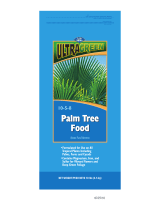 Lilly Miller 100505029 Guía del usuario
Lilly Miller 100505029 Guía del usuario
-
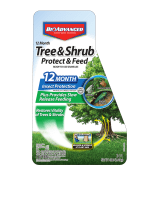 BioAdvanced 701900 Manual de usuario
BioAdvanced 701900 Manual de usuario
-
ALASKA 100099412 Guía del usuario
-
3B SCIENTIFIC 1021115 [W12720] El manual del propietario
-
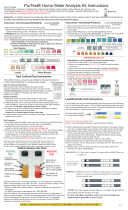 PurTest 777 Guía del usuario
PurTest 777 Guía del usuario
-
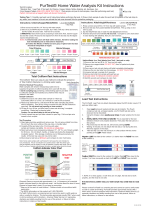 PurTest 777 Instrucciones de operación
PurTest 777 Instrucciones de operación
-
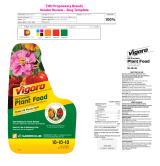 Vigoro HG-52919-1 Guía de instalación
Vigoro HG-52919-1 Guía de instalación
-
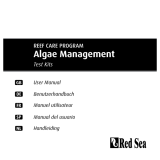 Red Sea Algae Control Pro Manual de usuario
Red Sea Algae Control Pro Manual de usuario







